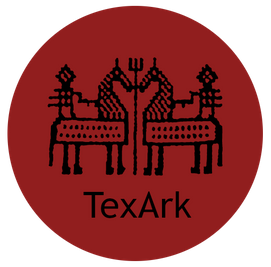Digital tools for analysing and displaying pre-historic and historic textiles
Karolina Pallin
ACTS OF ART(e)FACT: The Pskov case
The use of 3D software to analyse and interpret archaeological dress finds
(The 29th European Association of Archaeologists Annual Meeting, Belfast 2023)
This presentation focuses on a new method for analysing and interpreting fragmentary dress finds. The method, using the fashion industry software CLO3D, was first tested within the dress research program at the Vasa museum in Sweden, with good results. Usually, when interpreting archaeological textile/dress finds, the final work is based on so many choices, assumptions and qualified guesses that it is hard to, in the end, know what is what. Often, the focus is also to conclude the work in one or a few dress models. Especially if the result is recreated physically. In doing so, it is inevitable to lose information along the way. The point of using a digital tool is that we can choose less and instead try (almost) all aspects one needs in both the analysis, interpretation and recreation phases. The tool also leaves open to go back and forth in the research process, an often wanted flexibility.
Viking dress is a field of research quite challenging to navigate. The archaeological finds are fragmentary, and the interest is high. This field would benefit from access to a new method and tool for analysis and interpretation, and several finds might need to be revisited.
In 2019 my colleagues and I had the opportunity to visit The Archaeological Center of Pskov region (Russia). We received a warm welcome and an excellent guided tour of their collection and archaeological sites. One of the more important finds for our research was the dress find in Chamber Grave 3 (excavation IV, 2006). The digital analysis, interpretation and reconstructions attempts made here are based primarily on our photos and data collected.
This lecture is part of a comprehensive international research project entitled ACTS OF ART(e)FACTS. Additional partial studies within the project are presented in sessions #498 and #601, respectively.
Key words: CLO3D, Pskov, textile, Viking
__________________________________
INFORMATION AND POSSIBILITIES LOST BETWEEN THE DBMS AND THE PRESENTATION LAYER: DO WE KNOW WHAT WE ASK THE DATABASE FOR?
(The 28th European Association of Archaeologists Annual Meeting, Budapest 2022)
This paper’s primary focus is to address the problem of extracting and consolidating detailed information between a database backend and a filtered view in a presentation layer. It will also give insight into how we worked with a purpose-built relational database for the textile collection at the Vasa Museum in Sweden.
The focus for the database development at the Vasa Museum has been designing it for researchers who need full primary data. However, while a query gives a defined dataset, most researchers only have access to and knowledge about filtered views, such as the most common search functions for collections online.
SELECT
find.find_id,
type.*,
array_to_string(array_agg(DISTINCT beam.beam), ‘, ‘::text) AS
beams,
technique1_primary.primary_technique_eng,
technique2_type.technique_type_eng
FROM find
JOIN type ON type.find_id = find.find_id
JOIN jointable_find__beam ON find.find_id =
jointable_find__beam.find_id
JOIN beam ON jointable_find__beam.beam_id = beam.beam_id
JOIN technique1_primary ON type.technique1_primary_id =
technique1_primary.technique_primary_id
LEFT JOIN technique2_type ON type.technique2_type_id =
technique2_type.technique_type_id
GROUP BY
type.type_id,
find.find_id,
technique2_type.technique_type_eng,
technique1_primary.primary_technique_eng;
A simple query like this above will with slight changes, none of them erroneous per se, show very different results. A more significant query used to service a filtered view in a presentation layer, works under the same principles. Principles who are not known to the researcher using the filtered view’s search functions to find research data.
We can not ask researchers to know how to write SQL queries. Also, we can not ask from instances sharing their collection database to give everyone access to a SQL query tool. With more and more digitized collections, this put the scientific value of future research at risk and therefore, it needs to be explained, highlighted and discussed. Do we as researchers actually know what we ask the database for?
____________________________




